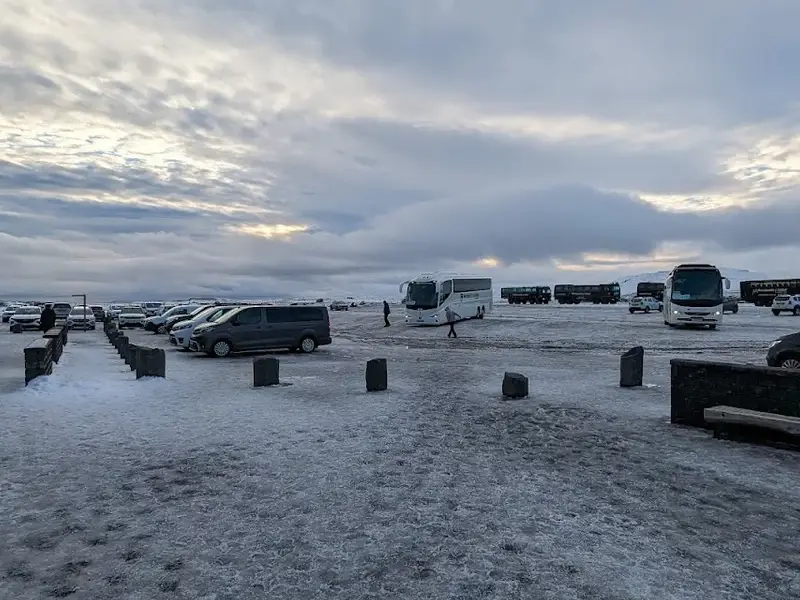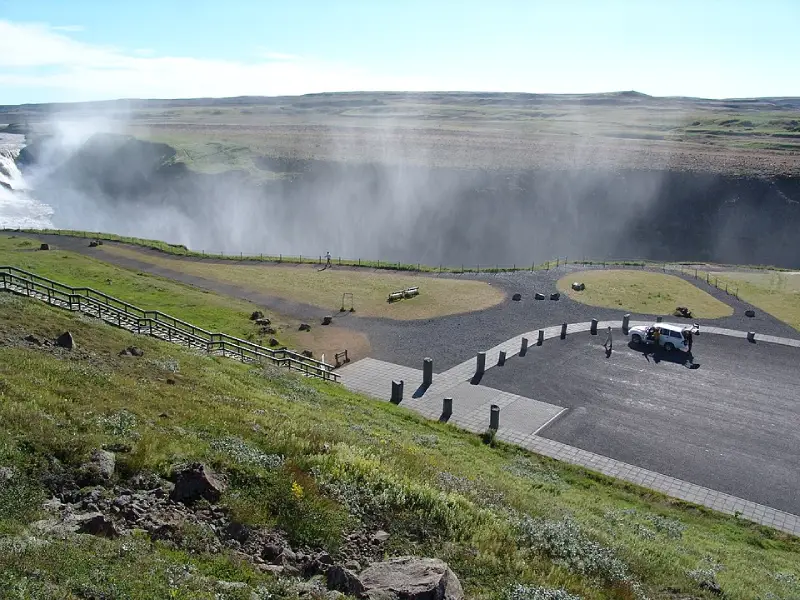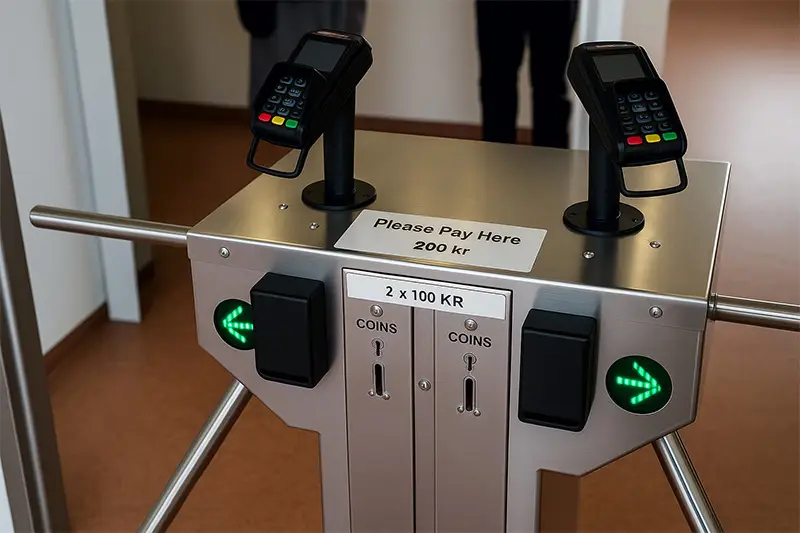If you plan to visit Gullfoss by car you should know that there are two parking lots. The Upper is the main one, located beside the visitor center and Lower, which is the alternative. It is linked by footpaths.
For the shortest, paved walk to the viewpoints and facilities, head to the Upper lot. Use the Lower one when the upper area is congested. Always check on-site signage for any seasonal fees or time limits, and budget 10–15 minutes from the lot to the railings. Allow extra in peak summer and in winter conditions.
Upper Park lot – Main Access
The upper car park is the default for most visitors. It’s adjacent to the café, shop and restrooms and offers paved, gently graded paths to the main viewing platforms. This is the most efficient choice if you need quick facilities, are traveling with children, or prefer the most direct route to the panoramic viewpoints.

Use the Upper car park when:
- You want the shortest, paved walk to the overlooks
- You plan a brief stop (30–45 minutes)
- You need restrooms or a warm indoor break before or after viewing
Lower Car Park – Alternative / Overflow
The lower lot is a useful pressure valve on busy days, when there are many people visiting Gullfoss. Footpaths connect up to the upper area and down toward the river level. When the upper car park looks full or congested, starting here can reduce circling time and add a calmer approach to the views.

Use the Lower car park when:
- The upper lot is busy and you want faster turnover
- You prefer a quieter start and don’t mind a short uphill walk
- You plan to check the lower path if it’s open (see seasonal notes below)
Arrival Timing and Flow
Visiting Gullfoss in Peak Summer (June–August)
Late morning to mid-afternoon is the busiest window as day tours and self-drivers converge. If you want it to be easier for your and to have more space on the walkways, plan your stop for early morning or late afternoon. Add 10–15 minutes to your schedule for parking, the short walk to the railings, and brief restroom lines during coach arrivals.
Visiting Gullfoss in Shoulder Seasons (May, September–October)
Crowds are generally lighter than in high summer, but weather shifts can be abrupt. Keep a small buffer in your plan so you can pause for wind or passing showers without compressing your viewing time.
Visiting Gullfoss in Winter (November–March)
Expect ice, wind, and limited daylight, with slick surfaces even near vehicles. The lower path is often closed for safety – confirm status at the visitor center before descending. Add 5–10 minutes of extra buffer for careful walking and additional layers.
Fees, Signage, and On-Site Rules
Policies may change seasonally. Check posted signs on arrival. If payment is required, it’s typically via machine or QR/online, with cards widely accepted.

Respect any signed time limits to keep spaces turning over and avoid penalties. The car parks are intended for day use; follow on-site instructions and local regulations if you plan to park or overnight elsewhere. Keep entry/exit lanes clear, use marked bays only, and avoid verges or turning circles to maintain safe flow for pedestrians, coaches, and emergency access.
Vehicles & Special Cases
Coaches and minibuses must use designated bays and follow marshal directions when present. RVs and campervans should park only in marked spaces and confirm local overnight rules in advance if staying elsewhere.
Motorcycles and bicycles should use signed areas where available and keep pedestrian routes and approaches to the railings clear. For drop-off or pick-up, use marked zones only; do not stop in live lanes or block crossings.
Safety Essentials in the Car Parks
Visiting Gullfoss is as much about preparation as it is about the view, and the car parks are no exception. Conditions on the plateau can shift quickly, and both drivers and pedestrians need to stay alert. Here are the key safety essentials to keep in mind:
Secure doors in wind. Strong gusts are common in the open plateau around the waterfall. Always open car doors slowly and keep a firm grip to prevent them from being pulled wide or striking nearby vehicles. This is especially important for families with children, as sudden gusts can take them by surprise.
Drive slowly and yield. The car parks are busy with pedestrians moving between vehicles, footpaths, and viewpoints. Reduce your speed and watch carefully at the path entrances, where visitors often cross without looking. Coaches and larger vehicles also require more space, so be patient and give them room to maneuver.
Dress for short but exposed walks. Even the brief walk from your vehicle to the railings can feel harsh in Icelandic weather. Wear traction footwear in all seasons and add a waterproof/windproof outer layer to stay comfortable and safe. In winter, icy patches are common; microspikes or similar gear provide extra security.
Keep parking bays clear and tidy. Do not leave bags or valuables visible inside the car. Use the bins provided for litter and store loose items properly, as strong winds can easily scatter them. A tidy bay not only protects your belongings but also helps maintain the overall experience for other visitors.
By following these simple steps, you’ll reduce risks, keep your visit stress-free, and be ready to enjoy Gullfoss without unnecessary delays.
